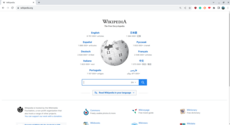Overview and History
– The World Wide Web (WWW) is an information system that enables content sharing over the Internet.
– It allows access to documents and resources through the Hypertext Transfer Protocol (HTTP).
– The Web was invented by Tim Berners-Lee in 1989 and opened to the public in 1991.
– Web resources are accessed through uniform resource locators (URLs).
– The most common document type on the Web is a web page formatted in HTML.
– Tim Berners-Lee invented the Web while working at CERN.
– He was motivated by the problem of storing, updating, and finding documents in a large organization.
– Berners-Lee adopted concepts from his private ENQUIRE system and Ted Nelson’s hypertext model.
– He submitted a proposal to CERN in May 1989 and implemented a working system by the end of 1990.
– The Web was released to other research institutions in 1991 and quickly spread.
Development and Popularity
– The Web protocol and code were made available royalty-free in 1993, leading to widespread use.
– The release of the Mosaic web browser in 1993 contributed to the Web’s popularity.
– Netscape Navigator, introduced in 1994, became the dominant browser.
– Microsoft developed Internet Explorer, starting the browser wars.
– The World Wide Web Consortium (W3C) was founded by Tim Berners-Lee and recommended XHTML.
Nomenclature
– The official spelling is ‘World Wide Web,’ but it is often called ‘the Web.’
– In Mandarin Chinese, it is commonly translated as ‘wàn wéi wǎng’ (万维网).
– The use of the www prefix has been declining.
– Web applications often brand their domain names without adding www.
– Mobile web usage has contributed to the decline of the www prefix.
Function and Difference between Internet and World Wide Web
– The World Wide Web is an application layer protocol that runs on top of the Internet.
– It helps to make the Internet more functional.
– The Mosaic web browser improved the usability of the web by introducing image and GIF display.
– The Internet is a global system of interconnected computer networks.
– The Internet is a network of computer networks connected through telecommunications and optical networking.
– The World Wide Web is a global collection of documents and resources linked by hyperlinks and URIs.
– Web resources are accessed using HTTP or HTTPS protocols.
– HTTP and HTTPS are application-level Internet protocols.
– The Internet’s transport protocols are used by HTTP and HTTPS.
Accessing Web Pages and Resolving URLs
– Web pages can be accessed by typing the URL into a web browser.
– Web pages can also be accessed by following a hyperlink.
– Web browsers initiate background communication messages to fetch and display requested pages.
– Browsing, web surfing, and navigating the Web are terms used to describe using a browser to view web pages.
– Studies have identified different user patterns in web browsing behavior.
– Web browsers resolve server names into IP addresses using the Domain Name System (DNS).
– DNS is globally distributed and translates server names to IP addresses.
– The browser sends an HTTP request to the computer’s IP address.
– The HTTP request is sent across the Internet.
– The browser requests service from the World Wide Web.
– A web browser accessing a page at a specific URL is used as an example.
– The server name of the URL is resolved into an IP address using DNS.
– The browser sends an HTTP request to the computer at the IP address.
– The browser requests service from the World Wide Web.
– The requested resource is fetched and displayed by the browser.
The World Wide Web (WWW or simply the Web) is an information system that enables content sharing over the Internet through user-friendly ways meant to appeal to users beyond IT specialists and hobbyists. It allows documents and other web resources to be accessed over the Internet according to specific rules of the Hypertext Transfer Protocol (HTTP).

 The historic World Wide Web logo, designed by Robert Cailliau | |
| Year started | 1989 by Tim Berners-Lee |
|---|---|
| Organization | CERN |
The Web was invented by English computer scientist Tim Berners-Lee while at CERN in 1989 and opened to the public in 1991. It was conceived as a "universal linked information system". Documents and other media content are made available to the network through web servers and can be accessed by programs such as web browsers. Servers and resources on the World Wide Web are identified and located through character strings called uniform resource locators (URLs).
The original and still very common document type is a web page formatted in Hypertext Markup Language (HTML). This markup language supports plain text, images, embedded video and audio contents, and scripts (short programs) that implement complex user interaction. The HTML language also supports hyperlinks (embedded URLs) which provide immediate access to other web resources. Web navigation, or web surfing, is the common practice of following such hyperlinks across multiple websites. Web applications are web pages that function as application software. The information in the Web is transferred across the Internet using the Hypertext Transfer Protocol (HTTP). Multiple web resources with a common theme and usually a common domain name make up a website. A single web server may provide multiple websites, while some websites, especially the most popular ones, may be provided by multiple servers. Website content is provided by a myriad of companies, organizations, government agencies, and individual users; and comprises an enormous amount of educational, entertainment, commercial, and government information.
The Web has become the world's dominant information systems platform. It is the primary tool billions of people worldwide use to interact with the Internet.
1912 NW 143rd Ave #24,
Portland, OR 97229, USA